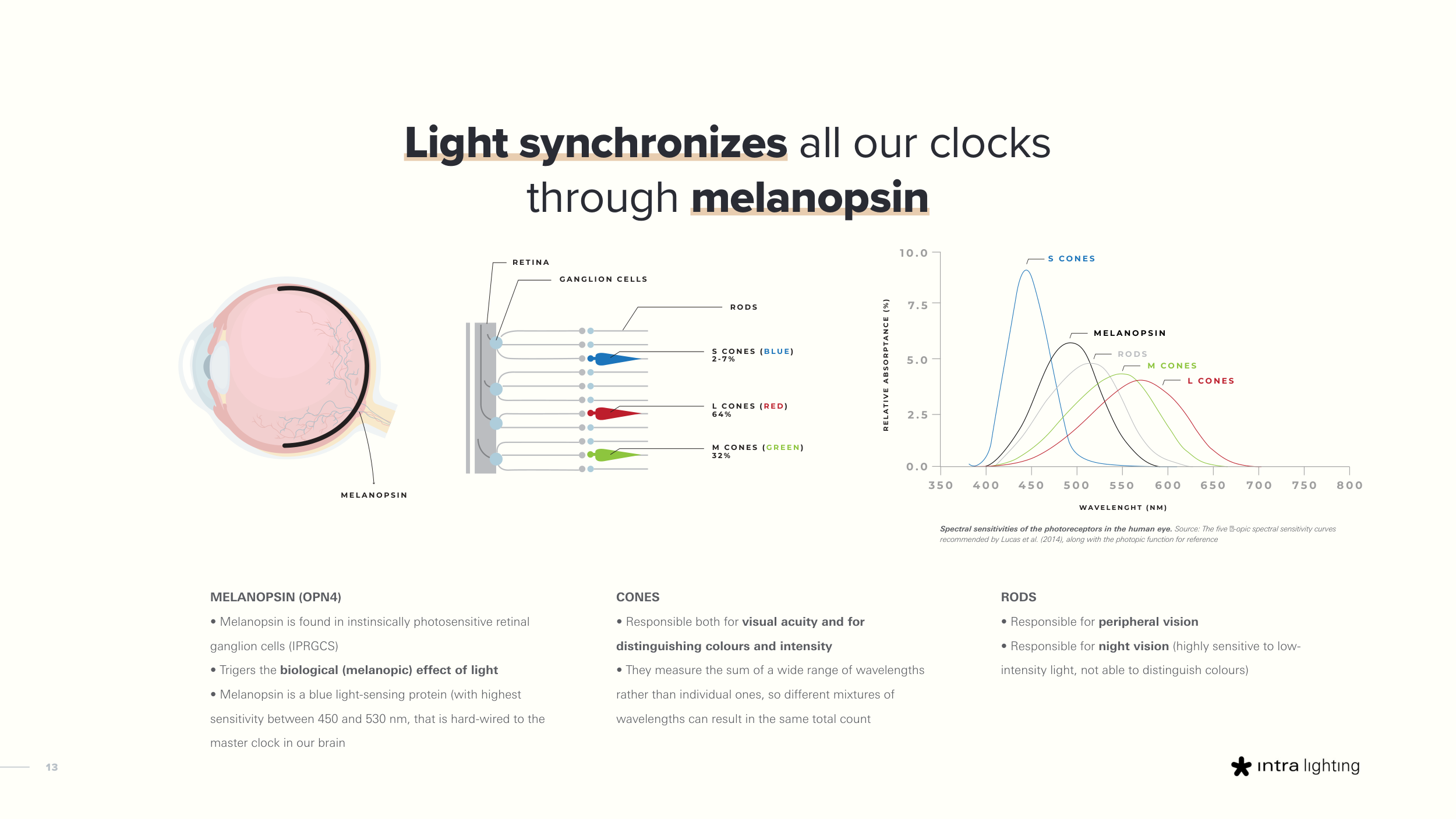13
Light synchronizes all our clocks
through melanopsin
MELANOPSIN (OPN4)
• Melanopsin is found in instinsically photosensitive retinal
ganglion cells (IPRGCS)
• Trigers the biological (melanopic) effect of light
• Melanopsin is a blue light-sensing protein (with highest
sensitivity between 450 and 530 nm, that is hard-wired to the
master clock in our brain
CONES
• Responsible both for visual acuity and for
distinguishing colours and intensity
• They measure the sum of a wide range of wavelengths
rather than individual ones, so different mixtures of
wavelengths can result in the same total count
RODS
• Responsible for peripheral vision
• Responsible for night vision (highly sensitive to low-
intensity light, not able to distinguish colours)
R E T I N A
G A N G L I O N C E L L S
R O D S
S C O N E S ( B L U E )
2 - 7 %
L C O N E S ( R E D )
6 4 %
M C O N E S ( G R E E N )
3 2 %
M E L A N O P S I N
W A V E L E N G H T ( N M )
R E L A T I V E A B S O R P T A N C E ( % )
1 0 . 0
7 . 5
5 . 0
2 . 5
0 . 0
4 0 0
5 0 0
6 0 0
7 0 0
4 5 0
3 5 0
5 5 0
6 5 0
7 5 0
8 0 0
S C O N E S
M E L A N O P S I N
R O D S
M C O N E S
L C O N E S
Spectral sensitivities of the photoreceptors in the human eye. Source: The five α-opic spectral sensitivity curves
recommended by Lucas et al. (2014), along with the photopic function for reference
L I G H T & W E L L - B E I N G
01
02
03
04


